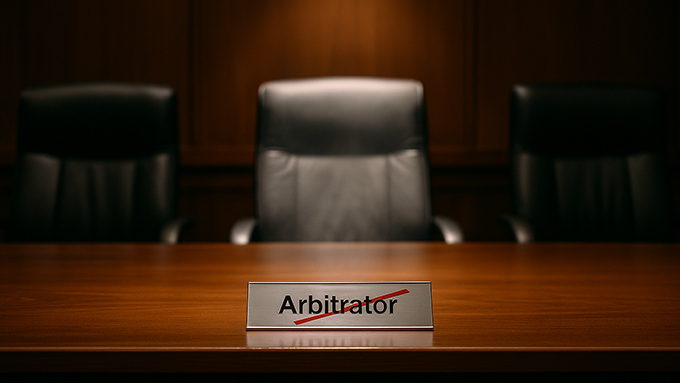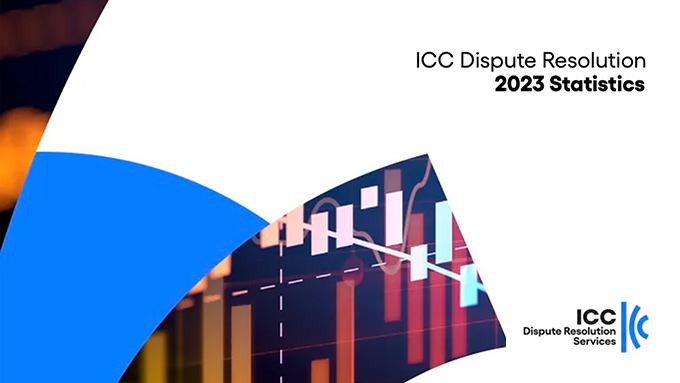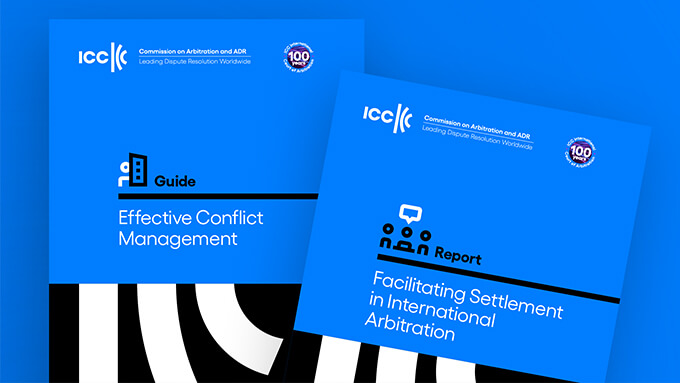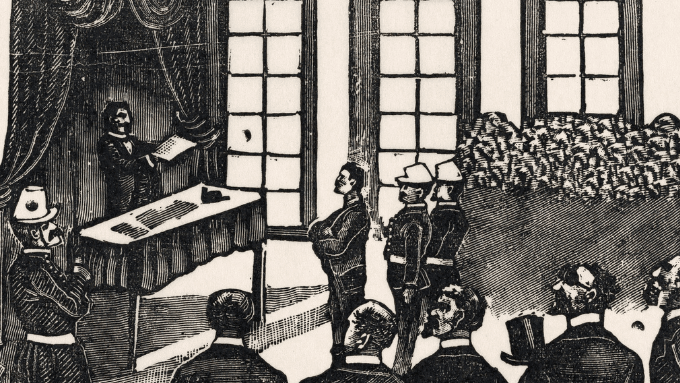Witness Conferencing in International Arbitration
Introduction
Witness conferencing is a means of taking evidence that is widely used in international arbitration practise. It is also applicable in court litigation in some jurisdictions[1]. Witness conferencing may be described as an evidence-taking process in which two or more witnesses give evidence concurrently before a tribunal[2]. Also called as witness confrontation, witness conferencing offers a wide range of forms and methods[3].
Pros and Cons of Witness Conferencing
Witness conferencing has become a popular procedure due to the notable advantages it brings[4]. In comparison to consecutive examination of witnesses, witness conferencing may be considered more effective for taking evidence as it eases the tribunal’s work of comparing the diverging claims of the witnesses. It also offers the opportunity to instantly challenge the witnesses on each other’s testimonies, and in real time, before the tribunal[5]. Moreover, it serves as a time and cost-effective measure since the duration of the hearings is reduced by examination of several witnesses at once[6].
However, one should bear in mind that witness conferencing is not suitable for every sort of dispute, since it may adversely affect the proceedings due to the tense nature of confrontation[7]. In such a case, the quality of evidence may be severely harmed due to personal, professional or cultural obstacles that witnesses face when they give oral evidence[8]. Accordingly, the circumstances of each case shall be individually reviewed to conclude on the appropriateness of witness conferencing.
The CIArb Guidelines
The Chartered Institute of Arbitrators has recently published Guidelines for Witness Conferencing in International Arbitrations (the “CIArb Guidelines”) with the aim to provide a procedural framework for practitioners of this widely used method. The CIArb Guidelines contains three main parts, those being (i) the Checklist, (ii) the Standard Directions, and (iii) the Specific Directions, in addition to explanatory notes for each part.
The Checklist
The Checklist offers a non-exhaustive list to assist the tribunal and the parties while they assess whether witness conferencing is suitable for the particular dispute at hand. It also provides diverging forms of conferencing[9].
As per the Checklist, witness conferencing is efficient if there is conflicting opinion evidence on a topic requiring testing. If the tribunal has experience or expertise on the issue covered by the witnesses, the CIArb Guidelines suggests tribunal-led conferencing[10].
Although fact witnesses may also be subject to witness conferencing, it is less common to examine them via conferencing in comparison to expert witnesses, since experts may ground their diverging approaches on the issue at hand to professional reasoning, whereas fact-based witnesses often struggle to do so with the facts[11]. Hence, the CIArb Guidelines underline possible drawbacks of using witness conferencing for fact-based witnesses[12].
The Checklist provides a noteworthy assessment on the relationship between the witnesses[13]. Accordingly, the CIArb Guidelines invite the practitioners to consider pre-existing relationships and cultural backgrounds of the witnesses. Most notably, it is illustrated that in some cultures, seniority (of age and/or profession) affects interaction amongst witnesses. Accordingly, while junior witnesses face cultural difficulties in rebutting the seniors, the seniors may not even deem it necessary to justify his/her views due to seniority which, in the end, reduces the quality of evidence. In addition, the Checklist provides an illustrative joint report format showing issues agreed and disagreed upon.
The Standard and Specific Directions
The Standard Directions of the CIArb Guidelines offer a procedural framework focusing on the tribunal’s initial, or an early procedural order, on the conduct of the arbitration[14]. Accordingly, it suggests requesting a schedule covering areas agreed or disagreed upon by the witnesses, and a chronology of agreed-upon facts on the evidence given, concurrently, to ease the tribunal’s workload throughout the proceedings.
Whereas, the Specific Directions focus on procedural framework, depending upon by whom the conferences are to be led; (i) the tribunal, (ii) the witnesses, and (iii) the counsel[15]. Since each option offers a higher degree of control to the leader of the conference over the evidence, the CIArb Guidelines provides valuable directions to take into consideration prior to deciding on the method to be chosen.
Conclusion
By going beyond traditional cross-examination, witness conferencing often provides more effective and efficient means through which to provide evidence to the tribunals. The CIArb Guidelines answers the need of practitioners in international arbitration, through the non-exhaustive guidelines, procedural frameworks, and directions it provides in this commonly used mean of taking evidence.
[1] The courts of Australia, Singapore, England and Wales may be regarded as jurisdictions with witness conferencing methods that are used in court litigation: “Guidelines for Witness Conferencing in International Arbitration” (“the CIArb Guidelines”), The Chartered Institute of Arbitrators, April 2019, p. 13.
[2] Ballantyne, Jack; “CIArb Releases Witness Conferencing Guidelines”, Global Arbitration Review, 30 April 2019; The CIArb Guidelines, p. 13.
[3] For instance, witness conferencing may be led by the tribunal, the witnesses, themselves, and/or by counsel.
[4] Yuen, Peter/ Townsend, Matthew; “New CIArb Guidelines on Witness Conferencing,” Kluwer Arbitration Blog, 25 April 2019.
[5] CMS Law Singapore, “CIArb Launches Guidelines for Witness Conferencing in International Arbitration,” 6 May 2019.
[6] The CIArb Guidelines, p. 13-14.
[7] Robertson, David / Knight, Emma / Akiki Frederic; “Witness Conferencing: New CIArb Guidelines,” Lexology, 8 May 2019.
[8] The CIArb Guidelines, p. 14.
[9] The CIArb Guidelines, p. 26.
[10] The CIArb Guidelines, p. 26.
[11] For further information on witness conferencing of fact-based witnesses, please see: Hendel, Clifford J.; “Witness Conferencing Involving Witnesses of Fact: A Good Idea Whose Time Has Not Yet Come?” International Bar Association Arbitration News, Vol. 16, No.1, March 2011.
[12] The CIArb Guidelines, p. 28.
[13] The CIArb Guidelines, p.16 and 30-33.
[14] The CIArb Guidelines, p.18-19 and 45-51.
[15] The CIArb Guidelines, p. 20-24 and 52-65.
All rights of this article are reserved. This article may not be used, reproduced, copied, published, distributed, or otherwise disseminated without quotation or Erdem & Erdem Law Firm's written consent. Any content created without citing the resource or Erdem & Erdem Law Firm’s written consent is regularly tracked, and legal action will be taken in case of violation.
Other Contents

For arbitral awards rendered in international commercial arbitration to produce legal effects in foreign jurisdictions, they must be subjected to proceedings for “recognition” and “enforcement.” This process is governed by the New York Convention as well as by the provisions of the Law on Private International Law...

Arbitrability, the determination of whether a specific subject matter can be resolved through arbitration, constitutes a fundamental aspect of arbitration within the scope of international commercial dispute resolution. This concept draws a delicate balance between party autonomy—a fundamental principle of arbitration...

The recognition, enforcement, and annulment of foreign court and arbitral awards in Türkiye are processes in which public policy emerges as one of the most critical criteria for review, both in theory and in practice. The Court of Cassation decisions determine the direction of case law regarding the scope and...

As is well known, the action for annulment of objection is a special type of lawsuit regulated under Article 67 of the Turkish Execution and Bankruptcy Law No. 2004 (“EBL”). The primary objective of this action is to nullify a debtor’s objection to execution proceedings. Despite its procedural function of facilitating...

On 16 December 2024, the London Court of International Arbitration (“LCIA”) released its third batch of challenge decisions covering the period from 22 July 2017 to 31 December 2022. The LCIA has also issued a detailed commentary that identifies key legal themes and analytical trends, offering practitioners...

The International Chamber of Commerce (“ICC”) has published its report on the dispute resolution statistics for 2023 (“Report”) , shedding light on the evolving landscape of international arbitration...

Syndicated loans undoubtedly hold a significant position among global financing models. In 2023 alone, 3,655 syndicated loans were provided to companies in the US, with their total value reaching USD 2.4 trillion...

Preliminary attachment refers to the temporary seizure of a debtor's assets to secure a creditor's claim. While it serves as a vital instrument for safeguarding the rights of creditors, it is subject to specific and stringent conditions under Turkish law to prevent any potential misuse...

One of the most important reasons for parties to choose arbitration is the opportunity to freely choose their arbitrators. This freedom granted to the parties also distinguishes arbitration from proceedings before state courts, where the parties are deprived of the power to determine the judges who will conduct the...

The 6th Civil Chamber of the Court of Cassation ruled on October 12, 2022, that national courts have jurisdiction over objections to provisional measures in international arbitration disputes...

The declaration of intent to resolve disputes through arbitration is the fundamental constituent element of an arbitration agreement. To speak of a valid arbitration agreement, the parties' intention to arbitrate must emerge in a way that leaves no room for dispute...

In the wake of the evolving dynamics of commercial transactions, the Netherlands Arbitration Institute Foundation (NAI) announced new arbitration rules . 2024 NAI Arbitration Rules are in force as of 1 March 2024 and will be applicable on proceedings filed on or after this date...

With the global shift to online activities, domain names play a crucial role in identifying businesses. It is more common than ever for a domain name to be registered that is confusingly similar to a trademark or service mark...

The ICC Commission on Arbitration and ADR (“Commission”) published a new guide and report with the aim to increase awareness on alternative dispute resolution (“ADR”) mechanisms to prevent disputes and strengthen the relationship between all stakeholders.The Guide on Effective Conflict Management...

Mergers and Acquisitions (“M&A”) are restructuring of companies or assets through various types of financial transactions, such as mergers, acquisitions, purchase of assets, or management acquisitions. This Newsletter article covers M&A disputes being solved before arbitral tribunals.

In the context of arbitration practice, the principle of revision au fond means that the courts can not examine the merits of a dispute when reviewing an arbitral award. This principle is most commonly encountered in set aside and enforcement proceedings. An arbitral award is evidence of the parties’ willingness...

Under Turkish law, parties may agree on the settlement of disputes that have arisen or may arise, regarding the rights that they can freely dispose of, by arbitration. However, disputes which are not subject to the will of parties, such as the disputes relating to in rem rights of immovables, bankruptcy law...

On 4 September 2020, a research project “Does a Right to a Physical Hearing Exist in International Arbitration?” was launched by an International Council for Commercial Arbitration (“ICCA”) taskforce. Due to the Covid-19 pandemic, many arbitration hearings were held online. Many institutional rules...

Dubai International Arbitration Center amended its Arbitration Rules on 25 February 2022. The 2022 Arbitration Rules were published on 2 March 2022 and came into effect on 21 March 2022. The Rules will be applied to arbitrations that are filed after 21 March 2022; unless parties agree otherwise...

In the aftermath of the Achmea decision, controversies on intra-EU arbitrations continue. Most recently, the Paris Court of Appeal has annulled two arbitral awards rendered against Poland. Meanwhile, the Higher Regional Court of Berlin has refused to declare that an Irish investor’s ICSID claim...


Under Turkish law, the legal remedy that can be applied against arbitral awards is an annulment action. Law on International Arbitration No. 4686 (“IAL”) finds its application area in arbitration proceedings where Turkey is the place of arbitration...

It is well known that following a decision of the Court of Justice of the European Union, problems arose related to arbitration of intra-EU disputes, and particularly arbitration under the Energy Charter Treaty...

Arbitration in corporate law contains controversial elements in many respects, especially the issue of arbitrability. Even in legal systems where these disputes are considered to be arbitrable, uncertainties remain on whether an arbitration clause can be included in the articles of...





Arbitration has benifited from a great increase in the use of technology which has directly effected the conduct of proceedings. More particularly, with digitalization, the way that we conduct arbitration proceedings has been changed to reflect the current needs of parties, with an aim of increasing time...
































































